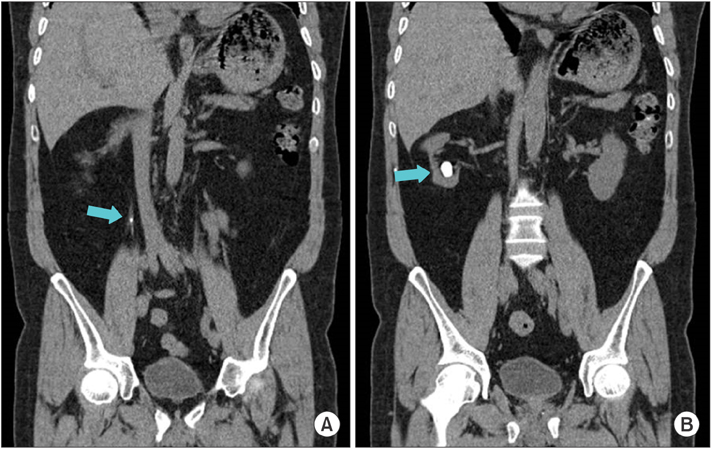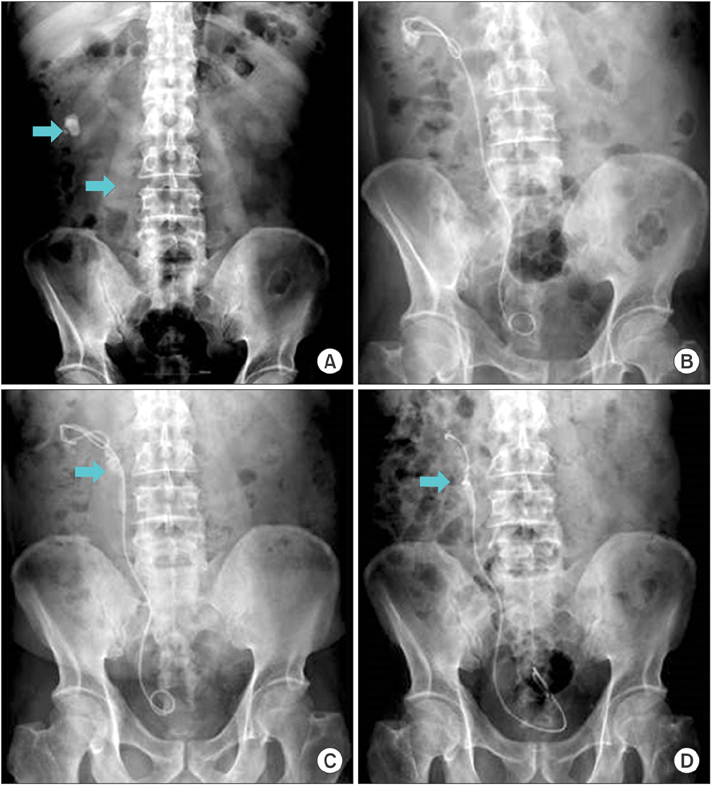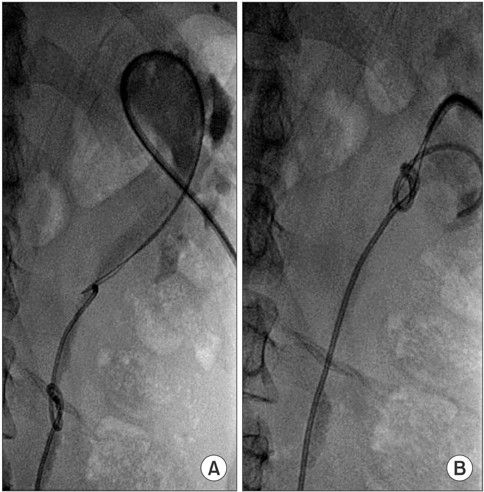Korean J Urol.
2015 May;56(5):405-408. 10.4111/kju.2015.56.5.405.
Knotted stents: Case report and outcome analysis
- Affiliations
-
- 1Department of Urology, Seoul Medical Center, Seoul, Korea. cau1004@naver.com
- 2Department of Urology, Senam Hospital, Seoul, Korea.
- 3Department of Radiology, Seoul Medical Center, Seoul, Korea.
- KMID: 2155322
- DOI: http://doi.org/10.4111/kju.2015.56.5.405
Abstract
- A knotted ureteral stent is an extremely rare condition, with fewer than 20 cases reported in the literature; however, it is difficult to treat. We report a case in which a folded Terumo guidewire was successfully used to remove a knotted stent percutaneously without anesthesia. We also review the current literature on predisposing factors and management strategies for knotted ureteral stents.
Keyword
MeSH Terms
Figure
Reference
-
1. Zimskind PD, Fetter TR, Wilkerson JL. Clinical use of long-term indwelling silicone rubber ureteral splints inserted cystoscopically. J Urol. 1967; 97:840–844.2. Ahallal Y, Khallouk A, El Fassi MJ, Farih MH. Risk factor analysis and management of ureteral double-j stent complications. Rev Urol. 2010; 12:e147–e151.3. Groeneveld AE. The role of ESWL in the treatment of large kidney stones. Singapore Med J. 1989; 30:249–254.4. Picozzi S, Carmignani L. A knotted ureteral stent: A case report and review of the literature. Urol Ann. 2010; 2:80–82.5. Rivalta M, Sighinolfi MC, Micali S, De Stefani S, Bianchi G. Knotted ureteral catheter in an 83-year-old man: case presentation and urological non-invasive management in the elderly. Urol Res. 2009; 37:261–262.6. Moufid K, Touiti D, Mohamed L. "Knot stent": an unusual cause of acute renal failure in solitary kidney. J Clin Imaging Sci. 2012; 2:36.7. Nettle J, Huang JG, Rao R, Costello AJ. Ureteroscopic holmium laser ablation of a knotted ureteral stent. J Endourol. 2012; 26:968–970.8. Bhirud P, Giridhar V, Hegde P. Midureteric knotted stent removed by percutaneous access. Urol Ann. 2012; 4:106–107.
- Full Text Links
- Actions
-
Cited
- CITED
-
- Close
- Share
- Similar articles
-
- Removal of Knotted Nasogastric Tube: A Literature Review and Lessons From Our Case
- Intracardiac Knotting of a Balloon-tipped, Flow-directed Pulmonary Artery Catheter: A Case Report
- Upward Migration of Distal Ventriculoperitoneal Shunt Catheter into the Heart : Case Report
- Surgical Removal of Knotted Pulmonary Artery Catheter: A Case Report
- A double-knotted pulmonary artery catheter with large loop in the right internal jugular vein: A case report




